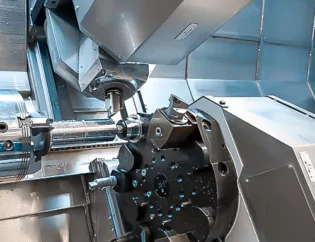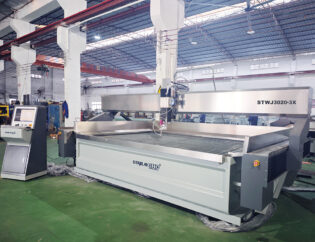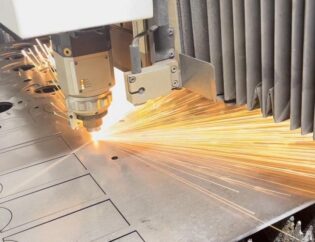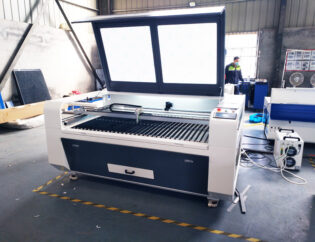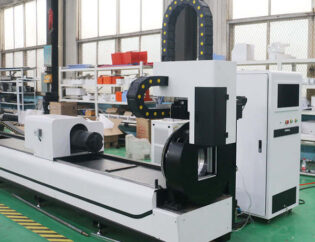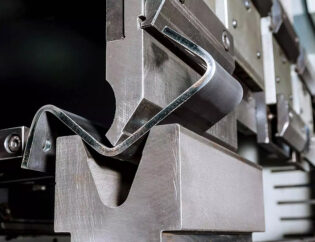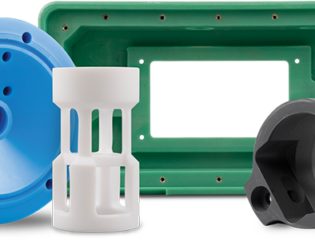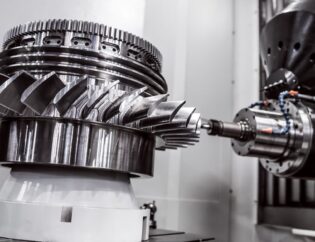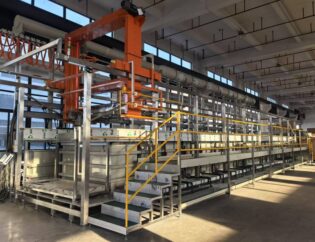CNC milling has revolutionized the world of manufacturing, making precision machining accessible to hobbyists and DIY enthusiasts. This guide delves into the essentials of CNC milling, empowering readers to transform their creative ideas into tangible products. Understanding the intricacies of CNC milling not only enhances craftsmanship but also opens doors to innovative projects.
In this comprehensive guide, readers will explore the fundamental concepts of CNC milling, including machine setup, software usage, and material selection. Each section is designed to build a solid foundation, ensuring that both beginners and experienced users can benefit. Expect to gain practical skills that will elevate your DIY projects to a professional level.
Additionally, the guide will cover troubleshooting tips and best practices to optimize your CNC milling experience. By the end, readers will be equipped with the knowledge and confidence to tackle their own CNC milling projects, fostering a deeper appreciation for this versatile technology. Prepare to embark on a journey that blends creativity with precision!
Building Your Own CNC Milling Machine: A Comprehensive Guide
Introduction
In the world of machining and fabrication, CNC (Computer Numerical Control) milling machines have revolutionized the way we create complex parts and components with precision. While professional CNC machines can be expensive, there is an alternative for those who are skilled in engineering and have a do-it-yourself spirit – building your own CNC milling machine. In this blog post, we will provide a step-by-step guide on how to create your own CNC milling machine, giving you the freedom to bring your ideas to life.
Technical Features of CNC Milling Machines
CNC milling machines come with various technical features that enhance their performance and usability. Below is a comparison table highlighting some of the key features:
| Feature | Description |
|---|---|
| Spindle Power | The power of the spindle motor, typically ranging from 300W to 3kW. |
| Travel Speed | Maximum speed at which the machine can move, often measured in mm/min. |
| Accuracy | Precision of the machine, usually within ±0.01mm to ±0.1mm. |
| Control System | The type of control system used, such as GRBL, Mach3, or proprietary systems. |
| Axis Configuration | Number of axes the machine can operate on, commonly 3-axis or 5-axis. |
| Material Compatibility | Types of materials the machine can work with, including wood, metal, and plastic. |
Types of CNC Milling Machines
CNC milling machines can be categorized into different types based on their design and functionality. Here’s a comparison of the most common types:
| Type | Description |
|---|---|
| 3-Axis CNC Mill | Moves in three directions (X, Y, Z) and is suitable for basic milling tasks. |
| 4-Axis CNC Mill | Adds a rotational axis, allowing for more complex shapes and designs. |
| 5-Axis CNC Mill | Capable of moving in five directions, ideal for intricate and detailed work. |
| Desktop CNC Mill | Compact and suitable for hobbyists, often used for small projects. |
| Industrial CNC Mill | Large machines designed for high-volume production and heavy materials. |
Understanding CNC Milling Machines
Before diving into the construction process, it’s important to have a clear understanding of CNC milling machines. They operate by using computer programs to control the movement of the machine’s tools along the X, Y, and Z axes. This allows for precise cutting, drilling, and shaping of materials.
Choosing the Right Design and Materials
When building a CNC milling machine, selecting the right design and materials is crucial. Common designs include gantry mills and benchtop mills. Each design has its advantages and disadvantages, which should be considered based on your specific needs and workspace.
Sourcing the Necessary Components
Building a CNC milling machine requires various components, including motors, drivers, controllers, and spindle systems. It’s essential to source quality parts at affordable prices. Websites like www.sigmatechnik.com and www.stylecnc.com offer a range of components suitable for DIY CNC projects.
Designing and Fabricating the Machine Frame
The frame is the foundation of any CNC milling machine. It must be sturdy and precise to ensure optimal performance. Considerations such as rigidity, stability, and vibration damping are essential when designing the frame.
Assembling the Mechanical Components
Once the frame is complete, the next step is to assemble the mechanical components. This includes installing lead screws, linear motion systems, and belt drives. Proper assembly ensures smooth and accurate movement for your CNC milling machine.
Wiring and Electronics
With the mechanical components in place, focus on wiring and electronics. Connect the motors, drivers, and controller board, and set up the necessary software to control the machine. This step is critical for the machine’s functionality.
Calibration and Testing
Calibration and testing are crucial steps to ensure the accuracy and performance of your DIY CNC milling machine. Adjust the stepper motor settings and conduct test runs to validate its functionality. This process helps identify any issues before full-scale operation.
Troubleshooting and Maintenance
Once your CNC milling machine is operational, be prepared for potential issues. Common troubleshooting techniques and maintenance tips will help keep your machine in optimal condition for years to come.
Conclusion
Building your own CNC milling machine is a challenging yet rewarding endeavor. By following the steps outlined in this guide, you will gain the knowledge and skills necessary to bring your machining dreams to life. Whether you are a hobbyist or a professional, a DIY CNC machine can unlock a world of possibilities in machining and fabrication.
FAQs
1. What materials can I use with a CNC milling machine?
CNC milling machines can work with various materials, including wood, metal, plastic, and foam, depending on the machine’s specifications.
2. How much does it cost to build a CNC milling machine?
The cost can vary widely based on components and materials, but a DIY CNC milling machine can typically be built for under €1000.
3. What software do I need for CNC milling?
Common software includes CAD for design, CAM for toolpath generation, and G-code senders for machine control. Popular options are Fusion 360 and GRBL.
4. How accurate are CNC milling machines?
Most CNC milling machines offer accuracy within ±0.01mm to ±0.1mm, depending on the quality of components and calibration.
5. Can I build a CNC milling machine at home?
Yes, with the right tools, materials, and knowledge, you can build a CNC milling machine at home, making it a great project for DIY enthusiasts.

